The alternative BP logo which resulted from a Greenpeace campaign - one of the examples of creatively engaging supporters online.
The second Melbourne Campaigner’s Network covered all things online campaigning, with a talk from Oxfam Australia’s Digital Campaigns Coordinator Tim Norton.
In my last post I spoke about identifying audiences, aims, objectives and briefly touched on tools. In this post-event article, I wanted to share the slides from my talk, and talk a little bit about what defines a digital campaign and the importance of statistics and reporting mechanisms.
There are a number of differences between a traditional campaign and a ‘digital’ campaign, chief amongst is that online campaigning is rarely stand-alone. It is a component within a wider campaign, and should be treated accordingly. Very rarely does an online campaign exist solely on it’s own – it should always be approached as a stepping stone towards your real-life goal or aim.
I’ve chosen some of the examples in the slides below because they are interesting and novel ways to approach a campaign utilising very simple concepts and existing services/technologies. Some of the most powerful online campaigns are not due to the expensive website or new, innovative tool, but rather are focussed on thinking outside the box and finding a new way to enact and empower a supporter base.
Taking a Campaign Online
Evaluation and reporting is one of the most important things you can do. With online campaigning, the figures are very accessible and data-mashing can produce amazingly accurate results. Learn from them. In the slides above I have show (a redacted version of) an example of Oxfam’s monthly reporting mechanism. These reports are compiled from a range of sources, all of which are freely available – Facebook Insights for Pages, Google Analytics and Hootsuite reports. Reporting like this can help both prove the effectiveness of a campaign to supporters, donors and other external parties, but more importantly it gives you an internal benchmarking system and allows for adaptation while the campaign is running. Ensure you build reporting mechanisms based on analytical data collected on a regular basis.
I mentioned in my talk the need to keep looking afield for fresh ideas and new ways of looking at campaigning online. Subscribing to a number of different websites and blogs (via a service such as Google Reader) dedicated to social media, digital campaigning and new online products can, if you have the time, be invaluable in gleaning new insights into the field.
Some of my favourite places to hear of new campaigns and learn from others are:
- Mashable
- The Blog Herald
- GOOD
- FairSay
- plus too many more to feature here
As well as keeping an eye on other companies/organisations within your field. It’s not stealing ideas, it’s research within the sector, and anyway, if you pay it back by also sharing your own exploits, tactics, successes and failures, the community as a whole benefits.
Finally, I cannot stress the benefits of connecting with like-minded people. Digital campaigning for social or environmental justice is a very niche field, and it is sometimes hard to find people who understand both the moral/social background of your work alongside the technical skills required. I have found the e-campaigner’s forum email list to be a great way to connect and share with digital campaigners around the world. It is UK based but members are global. Their events (held in Oxford and recently also in Vienna) are also very helpful. I’m currently thinking of pulling together an Australian event similar to the ECF event in 2012 – if this is something you’d be interested in, please do get in touch.
Key points to remember from my talk
- Identify your audience. Where do they interact or get their information? Is an online campaign the best way to get to them?
- Be committed. Be prepared for things to take time. Be a part of the community you’re attempting to empower/engage with.
- Be realistic about workload. Do you have the hours to commit to managing the campaign in an ongoing sense? How can you build your plans accordingly? Scheduling? Sharing workload?
- Identify your aim. What is the aim of your overall campaign? How does digital campaigning fit into this?
- Tools. Pick your tools according to your aims and learn them well from the outset.
- Evaluation. Collect statistics and records on everything. Build in report-back mechanisms to your campaign.
Happy to continue talking about how an effective campaign can be won and/or run online – join me on Twitter at @norton_tim 🙂
